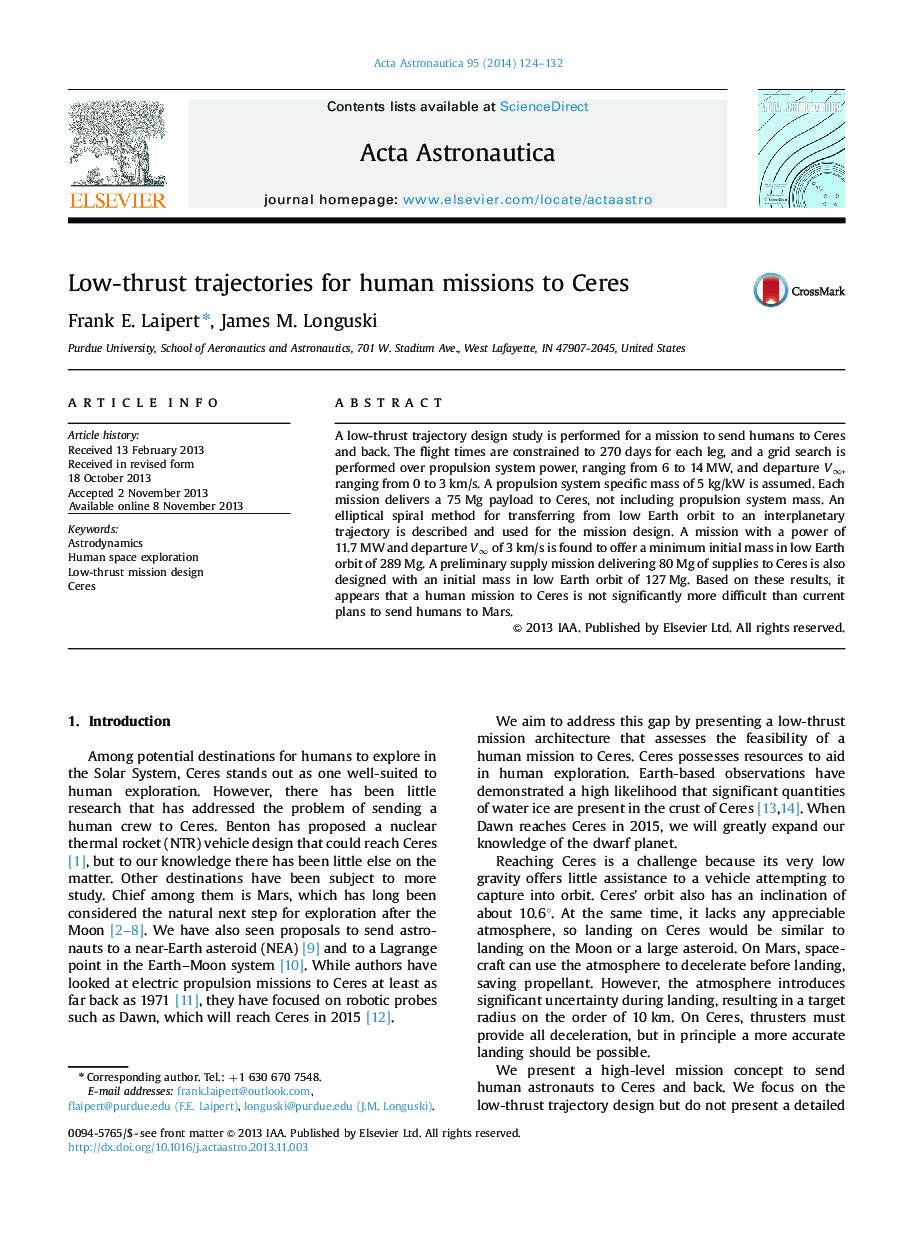| Article ID | Journal | Published Year | Pages | File Type |
|---|---|---|---|---|
| 1714681 | Acta Astronautica | 2014 | 9 Pages |
•We design a nuclear electric propulsion mission to send humans to Ceres.•A time-of-flight constraint of 270 days was set for each trajectory leg.•The mission spends 110 days on the surface of Ceres.•Given our assumptions, we find the IMLEO to be approximately 450 metric tons.•A 11.7 MW nuclear electric propulsion system is required to perform the mission.
A low-thrust trajectory design study is performed for a mission to send humans to Ceres and back. The flight times are constrained to 270 days for each leg, and a grid search is performed over propulsion system power, ranging from 6 to 14 MW, and departure V∞V∞, ranging from 0 to 3 km/s. A propulsion system specific mass of 5 kg/kW is assumed. Each mission delivers a 75 Mg payload to Ceres, not including propulsion system mass. An elliptical spiral method for transferring from low Earth orbit to an interplanetary trajectory is described and used for the mission design. A mission with a power of 11.7 MW and departure V∞V∞ of 3 km/s is found to offer a minimum initial mass in low Earth orbit of 289 Mg. A preliminary supply mission delivering 80 Mg of supplies to Ceres is also designed with an initial mass in low Earth orbit of 127 Mg. Based on these results, it appears that a human mission to Ceres is not significantly more difficult than current plans to send humans to Mars.
